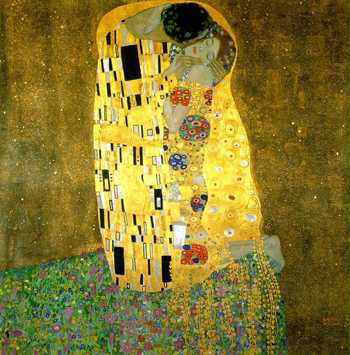| Search Art Prints | ||||||||||||||||||||
| Search Artists | ||||||||||||||||||||

|
||||||||||||||||||||
|
|
|||||||||||||||||||

The Kiss

|
The Kiss
"It has gone far enough, and everyone with the slightest sense of decency is filled with a burning rage. What is there to be said about this painted pornography?" That is how one critic responded to Gustav Klimt's first uncommissioned decorative cycle, The Beethoven Frieze. The year was 1902. It was in this same phase of his career that Klimt painted The Kiss. It is undoubtedly his most famous work, and perhaps his best.
Klimt had already explored the theme of lovers united by a kiss when he painted The Kiss. In fact, the construction of this piece is quite similar to other, earlier pieces of Klimt's on the same subject: the man bends toward his lover, who waits for (or receives) the kiss with closed eyes and a serene, peaceful expression.
The Painting
The lovers, embracing in a flowering meadow are nevertheless perilously close to an unaccountable abyss. Both figures are mostly obscured by their garments. The woman's figure is largely left to the imagination by her loose, flowing dress. It is the same case for the man, only more so, with his shoulders, head, and hands being his only distinguishable features. Their embrace is complete, a virtual unison. Indeed, the voluminous and similarly-colored garments of the lovers, in conjunction with the shimmer aura behind them, make them appear to be almost melting into one another. The woman's face is elegantly proportioned, and resembles many of the women Klimt painted. It is because of this that Klimt's intent as to her identity remains a hotly debated topic to this day, though the most likely candidate is Emilie Flöge, his sister-in-law.











